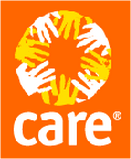CARE Gender Toolkit
Gender and power analysis form a foundation from which to contribute toward just and sustainable impact toward gender equality.
This tool presents options and reflections on analysis of gender and power. This is not a 'how-to' guide, but a toolbox of methods with discussion on tried successes, struggles and lessons on gender analysis.
Contents
WEIMI Guide
The Women's Empowerment Impact Measurement Initiative (WEIMI) Guide is a harvesting of the lessons learned and good practices of the WEIMI Country Office (CO) teams. A few important things to note about the content in the WEIMI Guide are:
- In view of the impact groups of the six WEIMI COs, the experience presented relates more to women than to girls.
- The guide only goes as far as the WEIMI COs progressed by the end of the initiative. Hence, the experience is richest in Parts I & II, while Parts III & IV draw more on external sources.
- The guide on its own is not sufficient to enable a CO to create their impact measurement system – it is simply a tool for COs to reference when creating an impact measurement system with the support of individuals with the expertise to fully support that process.
- The guide provides information on the approach that was taken by the COs as part of the WEIMI initiative and illustrates one of many ways to approach the development of an impact measurement system (i.e. it is not "the" guide to creating an impact measurement system for women's and/or girls' empowerment programs).
Who is the WEIMI Guide for?
The target audiences for this guide are:
- CO teams already engaged in similar work in women's and/or girls' empowerment or the promotion of gender transformation
- CO teams that are planning to develop similar programs
- Regional teams working with CO teams to build similar programs
What you will find in the WEIMI Guide?
In the WEIMI Guide you will find the following information organized across four parts:
- Part I - Developing the Theory of Change: Here you will find the basics of a theory of change (TOC), key considerations for developing a TOC for a women's and/or girls' empowerment program and some tips on how to ensure the quality and robustness of your TOC. This section also includes 3 briefs that illustrate how different CO's approached the development of their LTP; guidance on how to conceptualize impact, sub-impact, target, and stakeholder groups; and how to define domains of change, pathways, assumptions and risks.
- Part II - Defining Measurement Elements of the Theory of Change: Here you will find ideas on how to conceptualize "impact", the challenges of measurement, areas to focus on for measurement, and key considerations of developing an impact measurement system in the context of women's and/or girls' empowerment programs. This section also includes 3 briefs that provide guidance on defining breakthroughs and indicators; developing hypotheses and monitoring trends, assumptions and risks; and reflection in action.
- Part III - Developing the Impact Measurement Strategy: Here you will find good practices for measuring your TOC. This section also includes 3 briefs that describe how to map initiatives to pathways; identify and select data sources and partners; and the planning and implementing of a impact measurement strategy.
- Part IV - Testing the Theory Change: Here you will find lessons from WEIMI COs on testing the TOC. This section also includes 1 brief that speaks to what it means to test your TOC; how to sequence the testing of your TOC; and guiding questions for validating your TOC.
Good Practices Framework on Gender Analysis

To give an overview of what areas to consider when conducting analysis on gender, the Good Practices Framework on Gender Analysis offers a framework for understanding gender in a given context. It outlines key areas of inquiry to consider when trying to understand what are the conditions and characteristics of gender relations.
For each area of inquiry, the Good Practices Framework offers: potential research questions, and b) suggested tools to explore these questions.
The framework DOES NOT offer a frame to apply directly for research. It asks research teams to formulate their key questions for analysis, and adapt the framework as well as its questions to fit the research context and purpose. Based on these questions, research teams can explore what tools could be adapted to fit their needs.
| Download - Good Practices Framework: Gender Analysis |
Organizational Review and Design
Beyond programming, gender analysis also forms a fundamental part of organizational development. True commitment to gender equality has implications on how an organization recruits, trains and assesses staff, gender sensitive policies and practices across budgeting, partnerships and organizational priorities.
Included are a set of tools and resources around:
- Training on gender, equity and diversity
- Assessments exploring the organizational climate
- Representation of gender issues in planning, policies and practices
| Go to the Organizational Review and Design resources |
Acknowledgements
- Tools. CARE.


